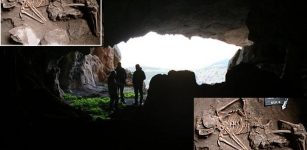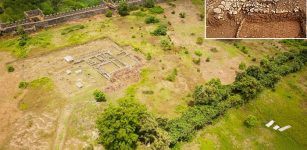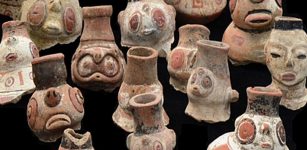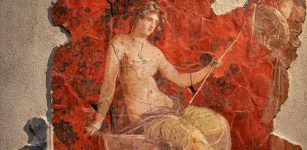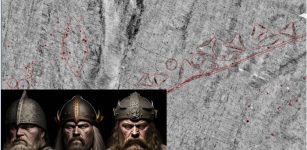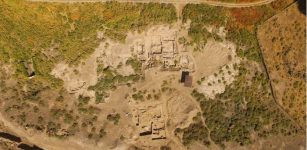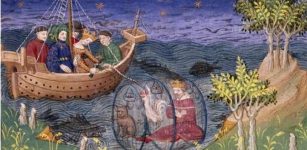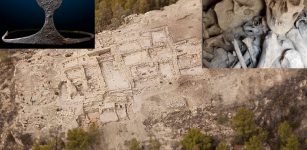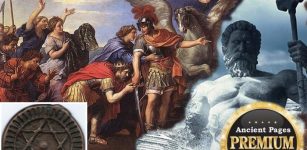Bristol Academic Cracks Voynich Code – Century-Old Mystery Solved
Conny Waters – AncientPages.com - A University of Bristol academic has succeeded where countless cryptographers, linguistics scholars and computer programs have failed - by cracking the code of the 'world's most mysterious text', the Voynich manuscript.
Although the purpose and meaning of the manuscript had eluded scholars for over a century, it took Research Associate Dr. Gerard Cheshire two weeks, using a combination of lateral thinking and ingenuity, to identify the language and writing system of the famously inscrutable document.
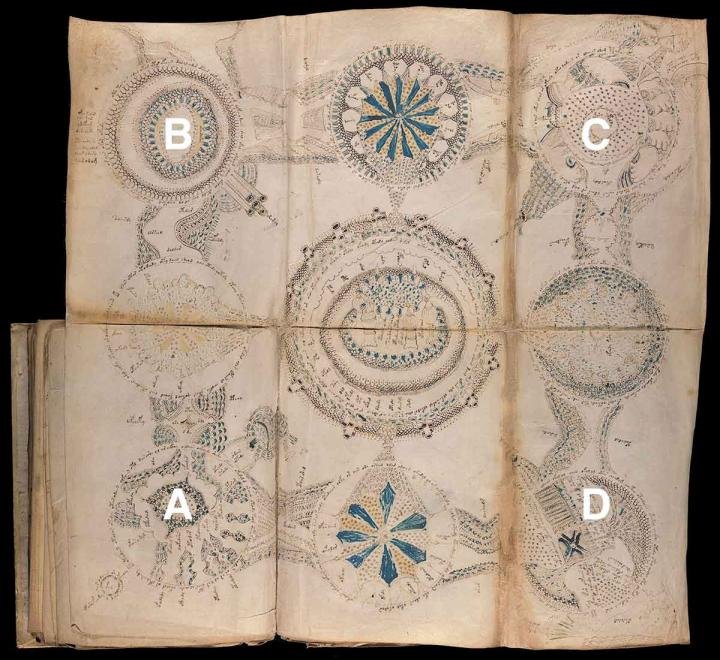 Vignette A illustrates the erupting volcano that prompted the rescue mission and the drawing of the map. It rose from the seabed to create a new island given the name Vulcanello, which later became joined to the island of Vulcano following another eruption in 1550. Vignette B depicts the volcano of Ischia, vignette C shows the islet of Castello Aragonese, and vignette D represents the island of Lipari. Each vignette includes a combination of naïvely drawn and somewhat stylized images along with annotations to explain and add detail. The other five vignettes describe further details of the story.
Vignette A illustrates the erupting volcano that prompted the rescue mission and the drawing of the map. It rose from the seabed to create a new island given the name Vulcanello, which later became joined to the island of Vulcano following another eruption in 1550. Vignette B depicts the volcano of Ischia, vignette C shows the islet of Castello Aragonese, and vignette D represents the island of Lipari. Each vignette includes a combination of naïvely drawn and somewhat stylized images along with annotations to explain and add detail. The other five vignettes describe further details of the story.
Cheshire describes how he successfully deciphered the manuscript's codex and, at the same time, revealed the only known example of proto-Romance language.
"I experienced a series of 'eureka' moments whilst deciphering the code, followed by a sense of disbelief and excitement when I realized the magnitude of the achievement, both in terms of its linguistic importance and the revelations about the origin and content of the manuscript.
"What it reveals is even more amazing than the myths and fantasies it has generated. For example, the manuscript was compiled by Dominican nuns as a source of reference for Maria of Castile, Queen of Aragon, who happens to have been great aunt to Catherine of Aragon.
"It is also no exaggeration to say this work represents one of the most important developments to date in Romance linguistics. The manuscript is written in proto-Romance - ancestral to today's Romance languages including Portuguese, Spanish, French, Italian, Romanian, Catalan and Galician. The language used was ubiquitous in the Mediterranean during the Medieval period, but it was seldom written in official or important documents because Latin was the language of royalty, church and government. As a result, proto-Romance was lost from the record, until now."
Cheshire explains in linguistic terms what makes the manuscript so unusual:
"It uses an extinct language. Its alphabet is a combination of unfamiliar and more familiar symbols. It includes no dedicated punctuation marks, although some letters have symbol variants to indicate punctuation or phonetic accents. All of the letters are in lower case and there are no double consonants. It includes diphthong, triphthongs, quadriphthongs and even quintiphthongs for the abbreviation of phonetic components. It also includes some words and abbreviations in Latin."
The next step is to use this knowledge to translate the entire manuscript and compile a lexicon, which Cheshire acknowledges will take some time and funding, as it comprises more than 200 pages.
"Now the language and writing system have been explained, the pages of the manuscript have been laid open for scholars to explore and reveal, for the first time, its true linguistic and informative content."
Written by Conny Waters – AncientPages.com Staff Writer

